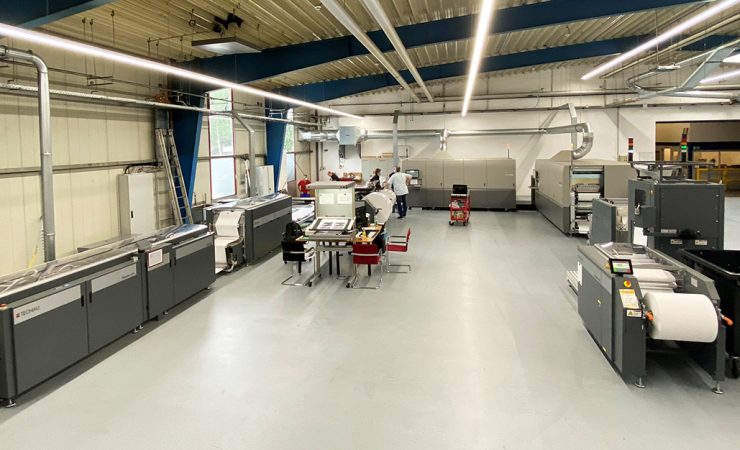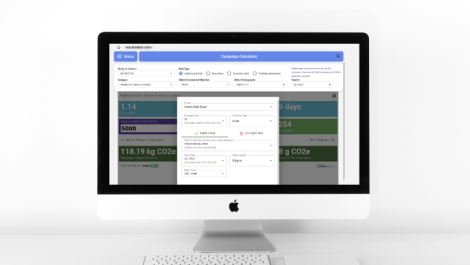German direct mail and marketing company Sattler Media Group has complemented a Ricoh digital web press with Tecnau finishing equipment for increased automation and flexibility in the types of products it can produce.
The company employs over 500 people and installed a Ricoh VC70000 inkjet web press at its newest facility in Oeynhausen. To keep up with the press’s 150m/min maximum speed, a Tecnau Revolution 50 cut-and-stack system and U40 splicing unwinder were selected in tandem with the press.
The zero speed splicer allows roll changeovers to be made without stopping the press, while the Cutter C52 enables variable cutting with perpendicular and cross chip-out for full-bleed applications. The cut sheets are moved via vacuum belts to the Stacker S51L, whose delivery section can handle sheets up to B2 in size and supports formats from 1-up to 4-up, though 3-up is the maximum required in this instance. The press and finishing line are arranged in a u-shaped configuration, designed to be operated by one person.
The installation was completed with a separate Tecnau unwinding and rewinding system, allowing printed rolls to be processed on other finishing equipment or sites as well as supporting special runs.
‘We were looking for a technically and economically attractive, fully digital solution to replace hybrid production of personalised direct mail, which was previously a two-step process, namely sheetfed offset followed by digital toner printing. Of course, since switching to digital-only with inline finishing, we’ve been able to respond much faster to time-critical jobs, because the offset pre-print and platemaking processes are eliminated,’ said Arndt Wille, business development manager at Sattler.
Substrate flexibility for the digital production was an important factor in the choice. ‘We want to exploit the available range of paper types and grammages as far as possible and use both uncoated and matte or glossy coated art papers. The paper weight plays a big role, too. We’re currently still limited to 250gsm but we anticipate that 300gsm will become increasingly prevalent owing to postcard production. In the long term, we’re also considering lightweight coated papers and significantly lower grammages in readiness for products moving towards data-driven marketing,’ explained innovation and solutions manager Christian Haneke.





